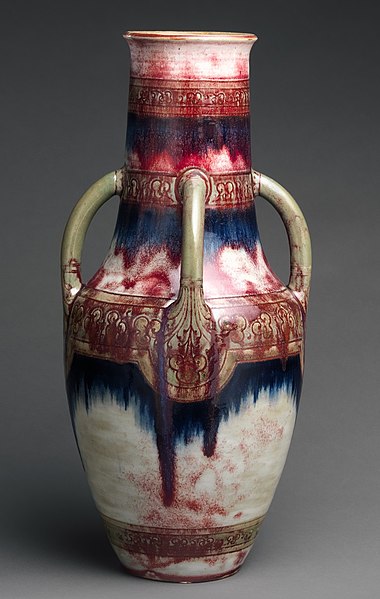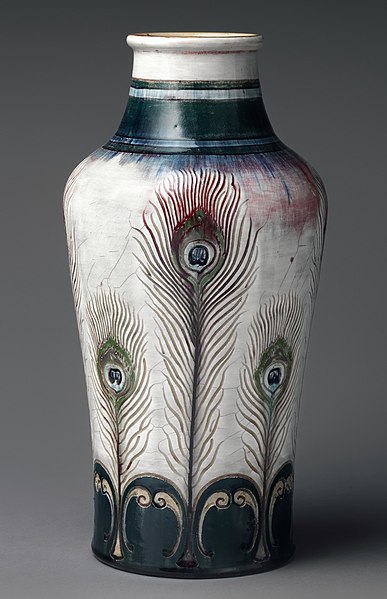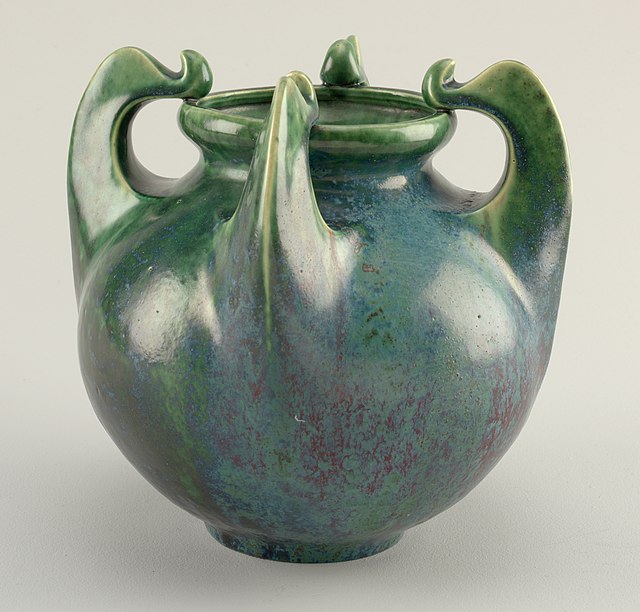Auguste Delaherche was a French ceramicist, who was a leading figure in French art pottery through the Art Nouveau period. Like other leading French potters of the period, he was intensely interested in ceramic glaze effects of colour and surface texture. He began his career making stoneware, but later also made porcelain in his studio.
Low vase, stoneware, 1905, 17.5 × 26 cm, 3.4 kg
Print of Delaherche at work in 1891
Vase with four green handles, stoneware, c. 1889
Vase with peacock feathers, stoneware, c. 1889
Art pottery is a term for pottery with artistic aspirations, made in relatively small quantities, mostly between about 1870 and 1930. Typically, sets of the usual tableware items are excluded from the term; instead the objects produced are mostly decorative vessels such as vases, jugs, bowls and the like which are sold singly. The term originated in the later 19th century, and is usually used only for pottery produced from that period onwards. It tends to be used for ceramics produced in factory conditions, but in relatively small quantities, using skilled workers, with at the least close supervision by a designer or some sort of artistic director. Studio pottery is a step up, supposed to be produced in even smaller quantities, with the hands-on participation of an artist-potter, who often performs all or most of the production stages. But the use of both terms can be elastic. Ceramic art is often a much wider term, covering all pottery that comes within the scope of art history, but "ceramic artist" is often used for hands-on artist potters in studio pottery.

Wave bowl by Christopher Dresser, Linthorpe Art Pottery, c. 1880
Pierre-Adrien Dalpayrat was one of the potters who specialized in subtle ceramic glaze effects. Vase, c. 1900
Doulton & Co., incised Lambeth stoneware by Hannah Barlow, 1874
The Ruskin Pottery (1898–1935) specialized in glaze effects, here 'high fired' reduction glazes








